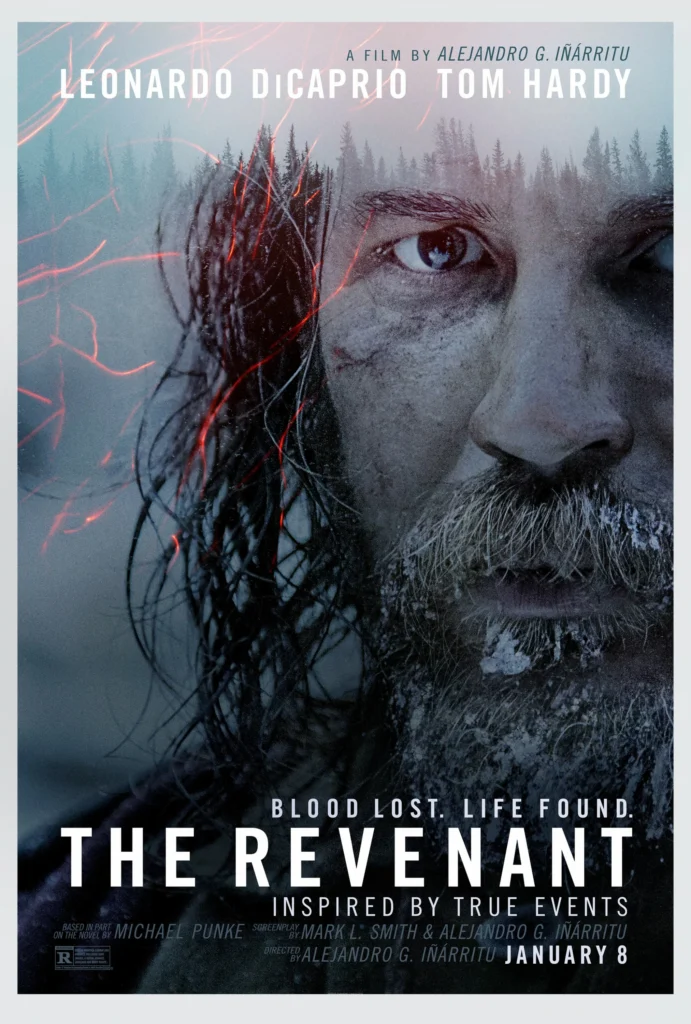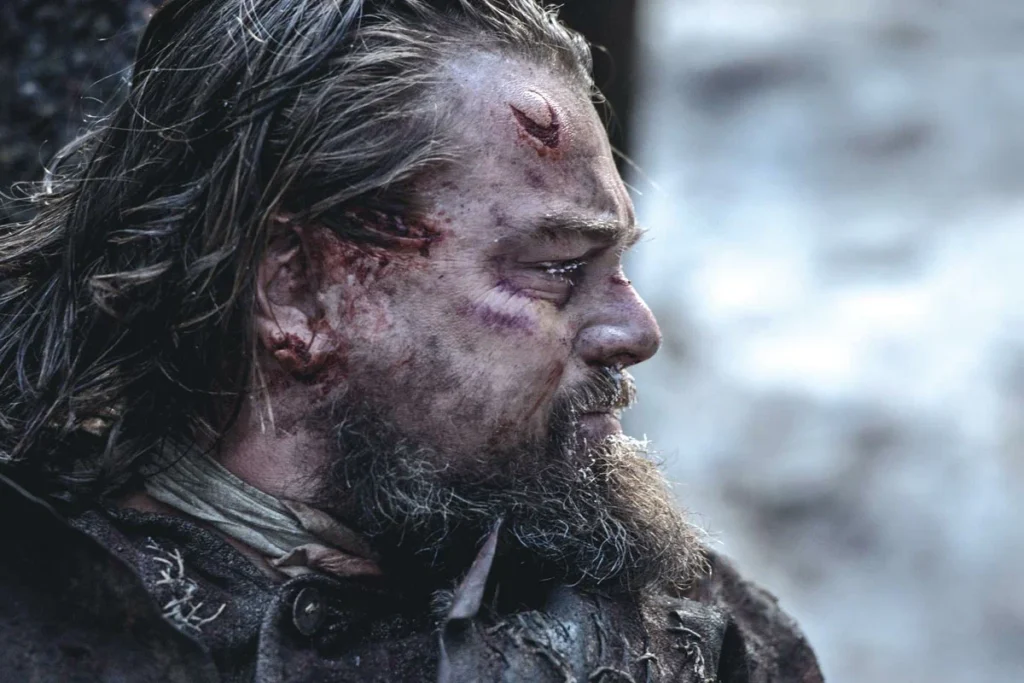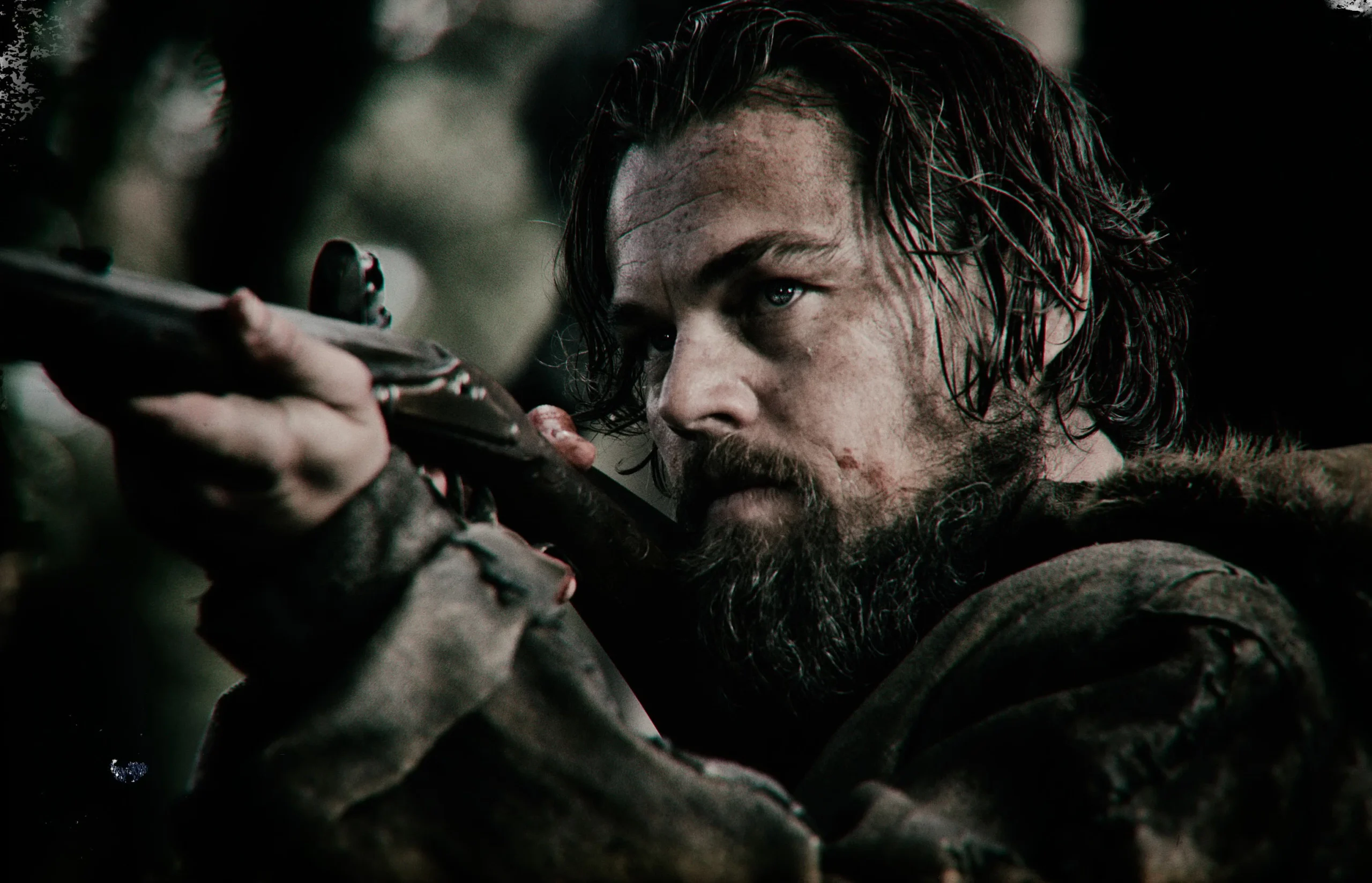In the annals of cinematic history, few films have captured the raw essence of survival and human resilience as poignantly as “The Revenant” movie. Directed by the visionary Alejandro González Iñárritu, this 2015 epic not only stands as a testament to filmmaking at its most challenging and visceral but also showcases a remarkable cast led by Leonardo DiCaprio in one of his most compelling performances. Set against the unforgiving wilderness of 1820s America, “The Revenant” is more than just a tale of survival; it’s a deeply moving narrative that explores themes of revenge, redemption, and the indomitable human spirit. This article delves into the heart of the film’s brilliance, from its breathtaking cinematography to the stellar performances that bring this harrowing story to life.

The Making of ‘The Revenant’: A Testament to Cinematic Grit
The journey of bringing “The Revenant” to the big screen was as arduous as it was awe-inspiring, mirroring the very themes of endurance and perseverance that the film portrays. Director Alejandro González Iñárritu’s commitment to authenticity led the cast and crew into the heart of Canada’s remote wilderness, facing harsh weather conditions and challenging landscapes. This unyielding pursuit of realism not only tested the limits of the actors but also the crew, who worked tirelessly to capture the raw beauty and brutality of nature.
Leonardo DiCaprio, embodying the role of frontiersman Hugh Glass, delivered a performance that was both physically and emotionally taxing. The actor underwent extensive preparation to portray Glass’s grueling journey, including learning survival skills and enduring freezing temperatures. The film’s commitment to using natural lighting added another layer of complexity, often limiting shooting times to a few precious hours of dusk or dawn. This dedication to naturalism not only heightened the film’s visual appeal but also its thematic depth, immersing the audience in the unrelenting wilderness that Glass battles against.
“The Revenant” also pushed the boundaries of cinematography, thanks to the masterful work of Emmanuel Lubezki. The use of long, unbroken takes and wide-angle shots created an immersive experience, placing viewers right alongside Glass in his fight for survival. This innovative approach to filming not only showcased the stunning landscapes but also amplified the intensity of the narrative, making every moment of Glass’s journey feel palpable and immediate.
In this section of the film’s journey, we witness a confluence of artistic vision, unparalleled dedication, and raw human effort, all converging to create a cinematic experience that is as unforgettable as it is groundbreaking.

The Storyline and Cinematic Brilliance of ‘The Revenant’ movie
At the heart of “The Revenant” lies a gripping tale of survival, revenge, and redemption. The film, inspired by true events, follows the harrowing journey of Hugh Glass, a fur trapper left for dead in the wilderness after a brutal bear attack. What unfolds is a relentless quest for survival against the merciless forces of nature and human treachery. The narrative is not just about physical endurance; it’s a profound exploration of the human spirit’s resilience in the face of unimaginable adversity.
The cinematic execution of this story is nothing short of extraordinary. The film’s visual storytelling is a masterclass in cinematography, with Emmanuel Lubezki’s lens capturing the stark, unforgiving beauty of the natural world. Each frame is meticulously crafted, from the breathtaking landscapes to the visceral, up-close encounters with danger. The use of natural light adds a layer of realism and immediacy, making the audience feel as though they are part of Glass’s journey.
The Revenant’s storytelling is further enhanced by its sound design and score. The subtle yet haunting soundtrack, composed by Ryuichi Sakamoto and Alva Noto, complements the film’s visual grandeur. It weaves through the narrative, accentuating the tension and emotion of key scenes. The sound design, with its meticulous attention to the nuances of the wilderness, further immerses the viewer in the film’s environment.
This section of the film is a testament to the power of visual and auditory storytelling in cinema. “The Revenant” transcends the traditional boundaries of filmmaking, creating an experience that is as emotionally impactful as it is visually stunning.

The Cast of ‘The Revenant’: A Symphony of Stellar Performances
“The Revenant” is not just a triumph of filmmaking; it’s a showcase of some of the most powerful performances in recent cinematic history. Leading the cast is Leonardo DiCaprio as Hugh Glass, whose portrayal is a raw and visceral embodiment of survival and determination. DiCaprio’s commitment to the role is evident in every scene, whether he’s battling a grizzly bear or navigating the treacherous terrain of the American wilderness. His performance is not just physical but deeply emotional, conveying a range of feelings from despair to unwavering resolve without the need for extensive dialogue.
Tom Hardy, playing the antagonist John Fitzgerald, delivers a performance that is both menacing and complex. Hardy’s portrayal of Fitzgerald is nuanced, making the character more than just a villain, but a survivor in his own right, albeit with questionable morals. The dynamic between DiCaprio and Hardy is electric, driving the film’s narrative tension and providing a compelling study of contrasting survival instincts.
The supporting cast, including Domhnall Gleeson as Andrew Henry and Will Poulter as Jim Bridger, add depth to the story, each bringing their unique perspective to the harsh realities of frontier life. Their performances, though more understated, are crucial in painting a complete picture of the era and the challenges faced by those who ventured into the unknown.
This section of the film is a testament to the power of performance in storytelling. Each actor brings their character to life with authenticity and emotional depth, making “The Revenant” not just a story of one man’s survival, but a portrayal of the human condition in its most raw and unfiltered form.

Concluding Thoughts: Movie ‘The Revenant’ as a Cinematic Landmark
In conclusion, “The Revenant” stands as a monumental achievement in filmmaking, a testament to the power of cinematic storytelling. It’s a film that goes beyond mere entertainment, offering a visceral experience that stays with the viewer long after the credits roll. The combination of Alejandro González Iñárritu’s visionary direction, Emmanuel Lubezki’s breathtaking cinematography, and the deeply immersive performances, particularly by Leonardo DiCaprio and Tom Hardy, elevates this film into a category of its own.
This movie is not just a narrative about survival; it’s a profound exploration of the human spirit’s capacity to endure and overcome. It challenges the viewer, asking them to confront the raw and often brutal aspects of life and humanity. “The Revenant” is a reminder of cinema’s ability to transport us into different worlds, to make us feel and empathize, and to tell stories that are as impactful as they are enduring.
As we reflect on “The Revenant”, it’s clear that this movie is more than just a cinematic masterpiece. It’s a powerful portrayal of resilience, a visual and emotional journey that resonates with the timeless themes of survival, revenge, and redemption. It’s a film that not only defines a genre but redefines what is possible in the realm of cinematic art.






